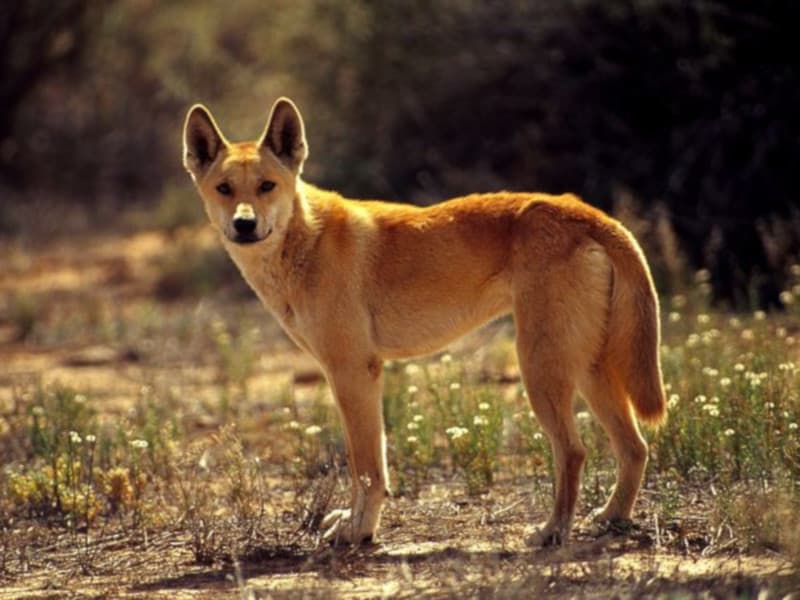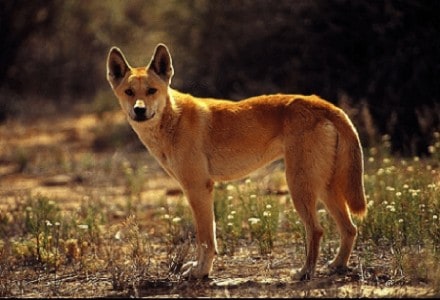
Dingo Facts
- First of all, the truly remarkable Dingo actually continues to remain a surprising mystery to scientists. That’s because the exact origins of the remarkable canid still elude researchers. Further, this results in its classification still eluding clarification. Currently, the remarkable animal remains classified as a particular subspecies of the gray wolf.
- Furthermore, within its native region, the animal presently constitutes the largest terrestrial predator. In fact, the powerful mammal also qualifies as one of the leading apex predators within its range. This animal generally remains viewed as a pest by owners of various livestock, however. This often leads to its being hunted or trapped.
- Currently, like many other species, the Dingo now faces the peril of climate change. But, ironically, the greatest threat to the survival of the canines has nothing to do with habitat loss or environmental changes. Escaped domestic dogs have interbred with the Dingo so extensively that individuals of pure descent are becoming rarer with every passing year.
Related Articles
Fennec Fox Indian Wolf Red Wolf
Dingo Physical Description
Perhaps most notably, the pure-blood Dingo possesses a quite distinctive appearance. This distinguishes it from other wild canines. Firstly, the head develops comparatively broad and the ears remain mostly completely erect. In addition, the muzzle develops as quite elongated. Furthermore, the eyes may be either brown, orange, or yellow, because it varies between individuals.
Further, the fascinating mammal also attains a highly respectable physical size. This statement holds true due to the fact that the powerful creature averages about 24 in (60 cm) tall at the shoulder. In addition, from the nose to tail tip, it will generally measures about 61 in (154 cm) in length as an adult. Also, the majority of individuals weigh about 44 lb (20 kg) in weight when adults.
The outstanding Dingo also has a highly distinctive and distinguishing appearance, making it easily recognizable. For one, its fur also typically grows relatively short. It also develops a somewhat fluffy tail. Further, individuals most commonly display a reddish brown base color. However, variations in this do occur, and usually include white, light brown, tan, and black.
- Kingdom: Animalia
- Phylum: Chordata
- Class: Mammalia
- Order: Carnivora
- Family: Canidae
- Genus: Canis
- Species: C. lupus
Dingo Distribution, Habitat, and Behavior
The Dingo evolved as a species of wild canine principally endemic to Australia and Southeast Asia. The animal also remains highly adaptable to a variety of habitats. It inhabits mostly forest edges, desert regions, and grasslands. Proximity to an adequate water supply is also a determining factor.
In addition, the powerful animal commonly makes its dens in hollow logs or deserted rabbit holes. The canine evolved as primarily nocturnal in hotter times. However, in cooler seasons it typically becomes less active. The periods of activity are generally brief and tend to last less than one hour.
The Dingo evolved as opportunistic in its dietary habits, consuming anything from carrion to insects to buffalo. But, it sometimes hunts small farm animals, such as chickens. Finally, in the wild, the animal usually remains quite shy of humans. This serves to provide it with some measure of protection.
Species Sharing Its Range
Kangaroo Paw Mary River Turtle Thorny Dragon
Check out our other articles on Astounding Lizards of the World, Yellow-Eyed Penguin, Blood Falls, Long-Finned Pilot Whale, Nevin’s Barberry, Tiger Rattlesnake, Giant Mesquite Bug

